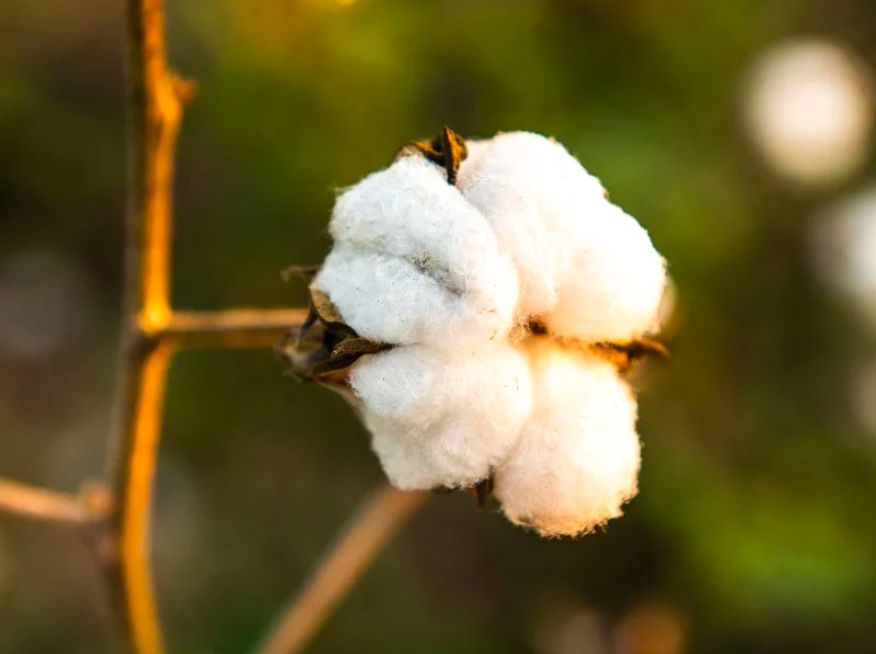


By Vinita Baravkar
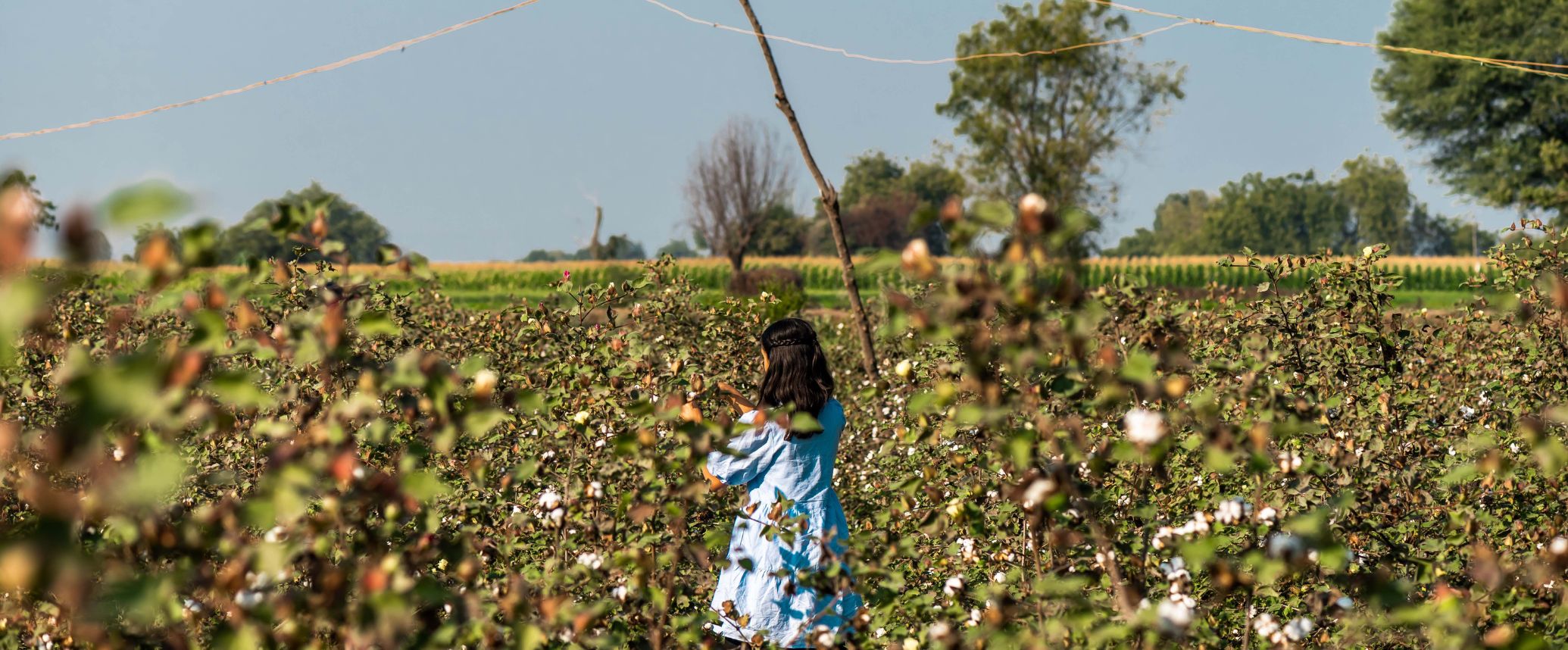
If you've ever wondered how the soft and luxurious cotton fabrics you love are made, you're in the right place. In this comprehensive guide, you’ll learn the entire journey of making cotton — from farm to fabric.
It starts in the spring when cotton farmers sow the seeds and nurture the plants until they are ready for harvesting. As cotton plants grow, they require a delicate balance of nutrients, water, and sunshine to thrive.
Once the cotton bolls (the iconic fluffy white ball that comes to mind when you think of cotton) have matured and the fibres are ready to be harvested, the real work begins.
The cotton is carefully picked by hand or machine to prevent damage to the delicate fibres. After harvesting, the cotton goes through a series of processing steps to transform it from raw fibres into the soft, breathable fabric we all know and appreciate.
However, behind the seemingly idyllic process of cotton farming lies a dark reality — the horrors of conventional cotton farming.
Conventional cotton farming severely compromises human health and the environment. It uses a lot of harmful chemicals, insecticides, pesticides and toxic dyes that affect the local biodiversity and threatens the quality of soil and water and the lives of the millions of workers involved.
These are just a fraction of the insecticides and pesticides used in conventional cotton farming:
If you’re counting, that’s 20 (again, there’s many more) hard-to-pronounce toxic chemicals used in cotton production.
Safe to say, conventional cotton farming isn’t the best option — for you, the workers, and the planet. This is where organic cotton farming comes in.
Organic cotton, or more specially, certified organic cotton, uses natural principles to grow and harvest cotton without using any of the above chemicals — at every step of the process.
Now that you’re aware of the problems with conventional cotton farming and the benefits of organic cotton, let's take a closer look at the entire process of cotton production from seed to shelf — starting with how it’s grown.
The lifecycle of cotton begins with the humble cotton seed. Farmers sow a handful of cotton seeds in raised beds across the fields during spring. The best time to plant cotton seeds depends upon when the soil is warm enough to germinate; hence it varies from region to region.
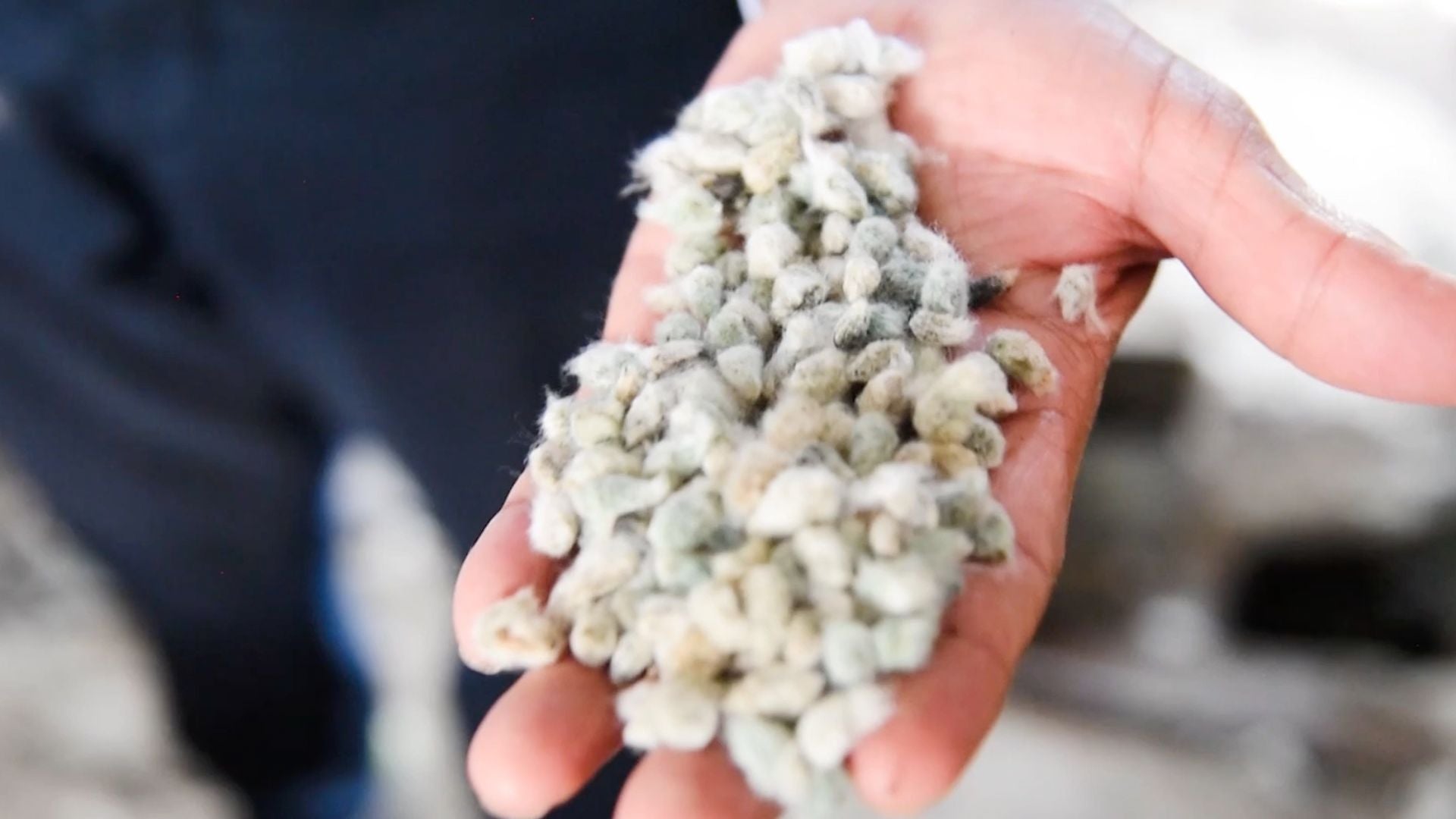
Here’s the catch. Regular farming methods often use cotton seeds that are genetically modified. One such example is the Bt cotton seed variety sold by Monsanto.
75% of all cotton produced today is genetically modified (GM), most grown in India, China, Pakistan and the US. The reason behind this is manyfold. Farmers prefer GM seed varieties as they are resistant to fungi, pests, diseases and can apparently yield higher harvests.
However, the reality is a lot darker.
Studies show that GMO Bt cotton seeds don’t improve yield. It’s the opposite. Nature is brilliant and adapts naturally, leading to new pests that the Bt cotton plant wasn’t built to resist.
Moreover, the farmers become heavily dependent upon big seed companies like Monsanto, DuPont and Syngenta for buying these expensive GMO seeds year after year, and the needed chemicals from their various sister companies. This burdens farmers, often leading to suicides after a bad year harvest year or crop loss.
In contrast, organic farming uses non-GMO cotton seeds found in nature and yield strong and higher-quality fibres. Plus, they’re a much better option in this regard — both for the farmers and for end consumers like you.
Many organic clothing brands choose shorter staple cotton as it’s cheaper and sustainable. But at Bhumi, quality is above all else, and they go one step further.
Bhumi uses premium organic long-staple cotton in its cotton production. Long staple cotton is of a higher quality thread than shorter staple cotton, which is cheaper and turns coarse and brittle over time. Additionally, shorter threads lead to pilling, breakage points, and a harsher, brasher fabric.
Think of it like picking the grapes for wine-making from the same vineyard. The bigger the grapes, the better their quality, and the more long-lasting and better-tasting wine they produce. Similarly, the longer the threads, the softer, more durable, and more luxurious the cotton.
Now that the seed is planted lets move on to growing the cotton plant.
It takes about six to eight weeks for the seeds to germinate and grow into a flower-bearing cotton plant. The plant blooms into yellow-white flowers.
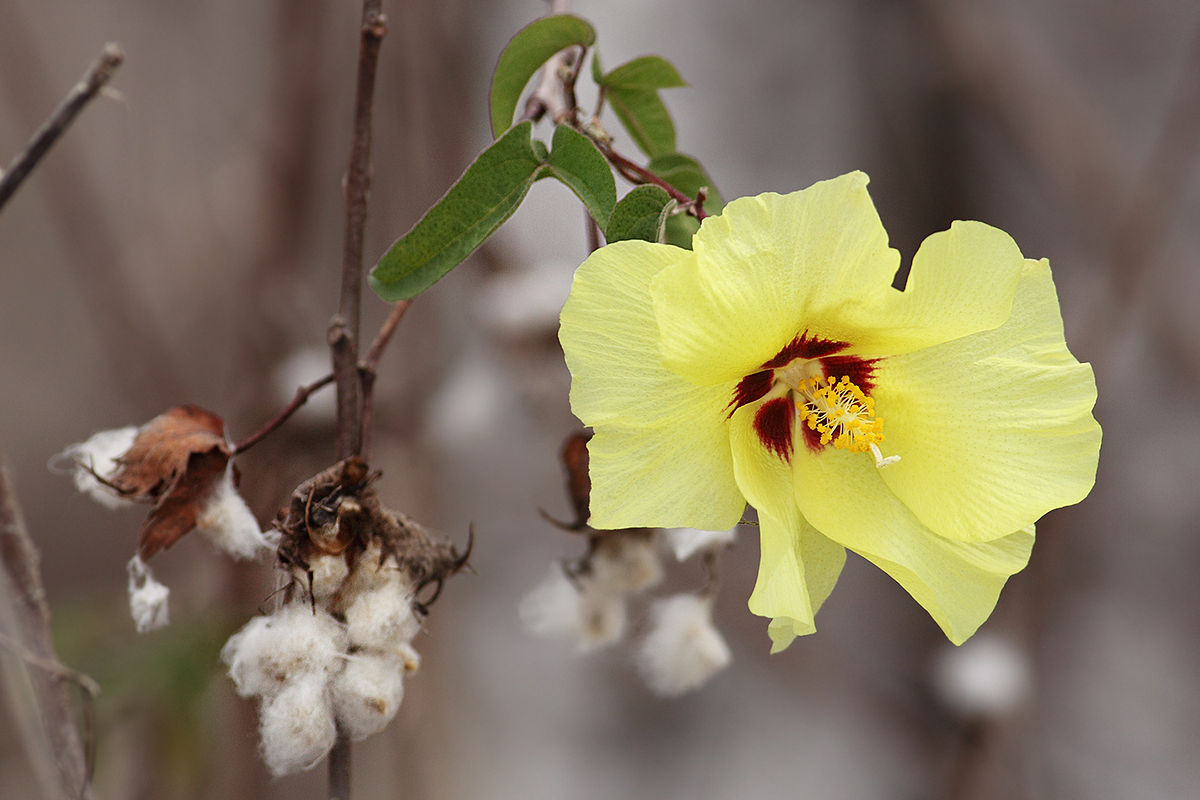
The soil needs to be fertile and well-drained for optimal growth. Once the bloom appears, the plant requires a surplus amount of water and nutrients and vigilant pest control to bear fruit.
At this step, farmers rely on irrigation, weed and pest control and fertilisers to ensure their crops are healthy and growing fast.
Cotton is a thirsty crop. Conventional cotton farming uses up huge quantities of water for irrigating cotton fields. According to WWF, 20,000 litres of water is required to produce just one kilogram of cotton fibre. That’s the equivalent of 2,700 litres of water needed to make one t-shirt!
However, organic cotton farming is quite the opposite in this regard. Organic cotton uses 91% less water than regular cotton, a fact that can’t be overlooked considering 61% of the textile industry’s water footprint is generated from cotton farming alone.
Cotton plants are perennials but almost always grow as annuals. They need a long growing season.
Rotating the crop each year with other nitrogen-fixing crops like legumes helps to minimise disease problems and enrich soil quality. This is one of the principles that organic cotton farming follows.
The plant also attracts pests like the cotton bollworm, tobacco caterpillar, whitefly and jassids. If not controlled on time, they can reduce yield by 20-80%.
Named one of the “dirtiest crops”, regular conventionally-grown cotton relies on high inputs of insecticides, pesticides, and chemical fertilisers.
Cotton uses 24% and 11% of the world’s insecticides and pesticides, respectively.
Out of the top ten pesticides used in conventional cotton farming in 2017, aldicarb, glyphosate, diuron, and tribufos are considered human carcinogens. The rest are potential endocrine disruptors and toxic to bees.
Farmers and families living near commercial cotton farms may suffer health injuries caused by toxicity. Glyphosate, in particular, can cause genetic damage and congenital disabilities.
Certified organic cotton is free of any harmful pesticides, insecticides and other chemical fertilisers. At Bhumi, their certified organic cotton is grown by local organic farmers in India using no synthetic fertilisers and pesticides. Instead, cotton farmers rely on organic and natural pest-control methods (like neem oil) that promote healthy crop growth and sustainable practices.
Once the plant reaches a height of one metre and above, the flowers fall off and are replaced by cotton bolls containing the white fluffy cotton fibre. Now it’s time to harvest.
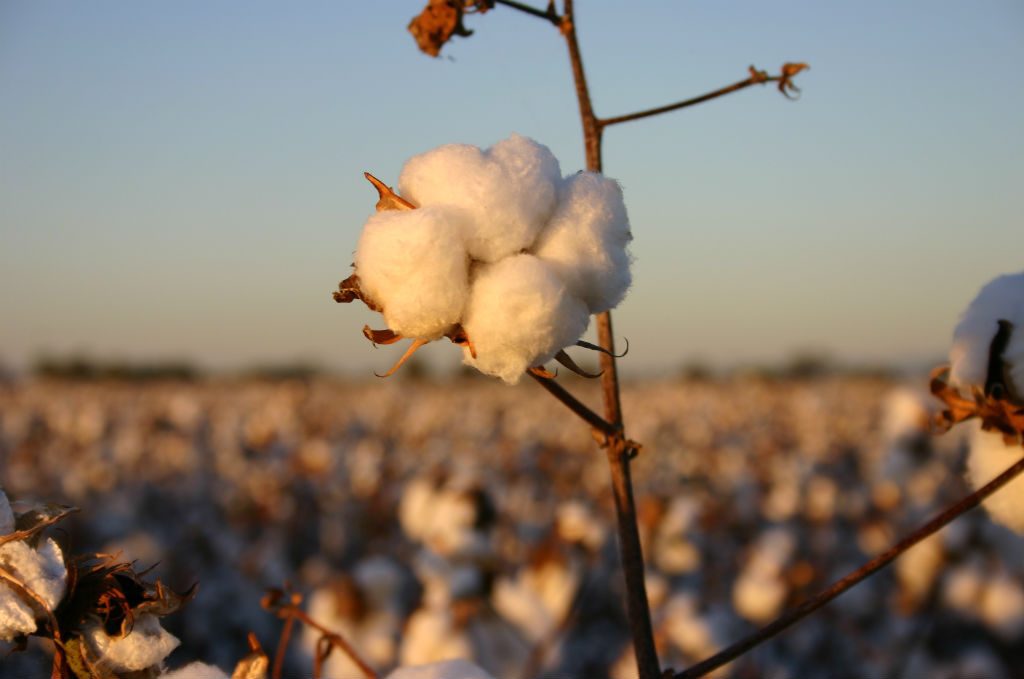
Harvesting is separating cotton fibres from the seeds. It’s done either by hand or using heavy machines.
In conventional farming, big machines like the cotton-picker plough across the field, picking and separating cotton fibres from the plants in a row. It’s a quick and efficient method. However, in Bhumi’s organic cotton farms in India, farm workers go about the field, handpicking each cotton boll with love and care.
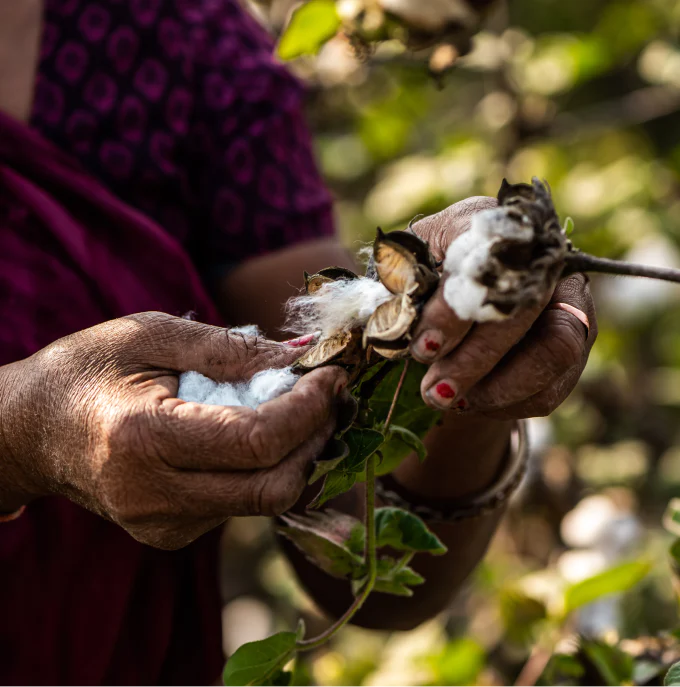
You might wonder if this makes any difference to the final product. To answer your question, yes, it does.
Handpicking avoids mixing mature and immature cotton plants. Machine-picked cotton is harvested all at once. As a result, the mature plants are tossed in with the immature ones, creating a lot of wasted and poor-quality cotton fibres. Besides, the machines often pick up stems and twigs of the plant which gets mixed with the fabric, making the final fabric not as soft and rather coarse.
In organic cotton farming, handpicking guarantees the purity of cotton while putting no stress on the delicate fibres resulting in extra-long staple strands.
Defoliation is the application of chemicals to force cotton leaves to drop from the plant to harvest the cotton bolls. It’s an important step in conventional cotton farming as it avoids getting the leaves mixed with the plant.
Chemical defoliants, hormones and growth regulators are sprayed on the plant to make the leaves fall off prematurely and open up the cotton bolls. In fact, these chemical defoliants are very similar to the Agent Orange used in the Vietnam War.
This process looks very different in organic cotton farming. Organic cotton farming restricts the use of any chemical defoliants.
Once the defoliation is complete, raw cotton fibres are taken to the cotton gin for ginning. Ginning is a mechanical cleaning process that separates the seeds, leaves, twigs and other ‘trash’ from the raw cotton fibres.
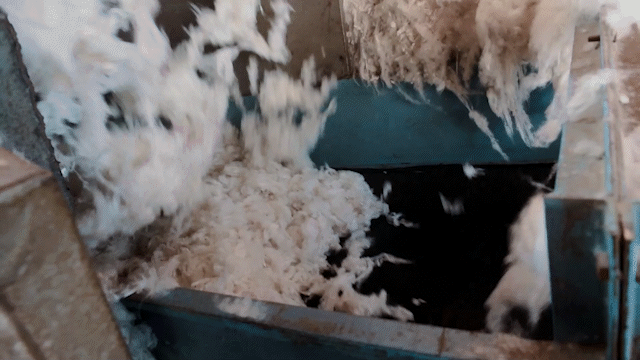
Super-soft cotton fibres, aka “white gold”, are the result— which are dried and pressed into bales (also known as lint). The leftover cotton seeds are processed into cottonseed oil which is used for cooking.
A soft, slimy mass is left behind, known as press cakes. In organic cotton farming, these press cakes are often fed to the farm livestock as animal feed, thus using every by-product of this process and creating zero waste.
The ginned cotton fibres, now pressed into large bales, are transported to the textile mills for the next step – spinning.
Now that the cotton fibres have passed the ginning stage, it’s time to spin them into yarn.
During the spinning process, strands of cotton fibres are twisted together to form yarn, wound onto the rings of a spinning frame and rolled into bobbins. These bobbins, filled with yarn, are removed from the ring frames and sent for further processing, such as bleaching or weaving.
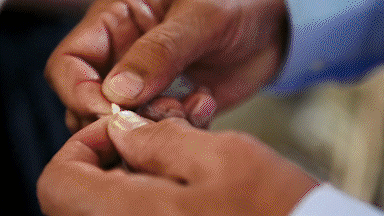
There are a few different ways of spinning: open-end spinning, ring spinning and compact spinning.
Conventional cotton farming uses open-end spinning, which is the fastest and cheapest way of producing yarn. But the yarns are often thicker, coarser and hairier and aren’t a good choice for high-quality cotton fabrics.
Organic cotton farming, on the other hand, makes use of ring spinning — the oldest method of spinning yarn. It produces better quality yarn with the widest possible count range. The yarn has finer counts, making it ideal for luxury bedding. These fine yarns are smoother, more durable and much less hairy than open-end yarn.
The next step in the cotton fabric production process is weaving and knitting.
In weaving, two sets of yarn are woven together to make a fabric. The long vertical thread, known as warps, and the horizontal thread, known as wefts, are interlaced on a loom to form the material.
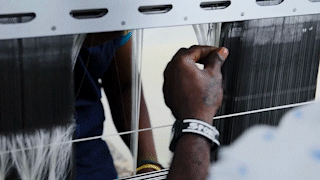
For certified organic cotton, the weaving often occurs in traditional handlooms. First, the handspun yarn goes through a pre-loom process, preparing the yarn for weaving. A skilled artisan weaves the warp and weft yarns to produce organic cotton fabric on the handloom.
The next step involves dyeing the cotton fabric with different colours and desired prints.
One of the biggest concerns in making cotton is the issue of water waste and toxic chemicals used in the dyeing process.
The conventional dyeing process is a highly toxic approach that uses synthetic dyes (like sulphate dyes and AZO dyes) and consumes a lot of water.
Throughout the dyeing stage, much water waste is generated that mixes with toxic heavy metals and pollutants. This toxic wastewater is then released into rivers, lakes and streams, polluting the waterways and risking human health.
The toxic chemicals used in the dyes have a harmful effect not just on the environment but also on the farmers as well as the people living in nearby areas. Not to mention over 80% of the toxic chemical-based dyes remain in your clothes long after the production process.
However, in organic-certified factories, only natural dyes are used. This means that the colours used in the dyes are derived straight from the elements in nature, like low-impact dyes and earth clays.
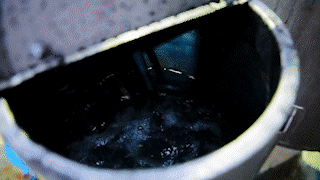
For printing on organic cotton fabric, natural vegetable and mineral inks and binders are used. These natural alternatives help counterbalance the toxic consequences of conventional cotton fabric manufacturing.
These natural dyes are often grown alongside ingredients such as indigo and turmeric.
Once the cotton has been dyed and printed, it’s sent to the garment factory for finishing.
This is the final process in manufacturing cotton before the garments are packaged and distributed to retailers worldwide.
After weaving, the fabric has a dull grey appearance and a harsh feel. It’s also non-absorbent, with traces of oil, waxes, and chemicals sticking to it from the previous steps. The finishing process helps clean up all these impurities and convert the loom-state cloth to finished fabric.
In conventional cotton production, finishing is the final step to create easy-care clothing that is soft, wrinkle-free, resistant to shrinkage, stain and odour, fireproof and antistatic. The process consists of a few elaborate steps: singeing, scouring, bleaching, and drying — done in textile factories.
There’s heavy use of chemicals in these steps. Formaldehyde, caustic soda, sulfuric acid, bromines, urea resins, sulfonamides, halogens, and bromines are just a few.
Next, the cotton is washed or "scoured" with sodium hydroxide and piece-dyed using formaldehyde agents. Regular cotton fabrics are often scoured, washed, and bleached with chlorine, APEO (a hormone disrupter), EDTA (ethylenediamine tetra-acetate which binds with heavy metals in rivers and streams), and volatile organic compounds (VOCs).
These toxic chemicals are slow to biodegrade, and studies have linked them to the production of carcinogens.
Fortunately, the finishing process looks very different for certified organic cotton. In bleaching organic cotton, a peroxide compound is used, which is safe and non-toxic.
Organic clothing manufacturers don’t add petroleum scours, formaldehyde, anti-wrinkling agents, chlorine bleaches, or other unauthentic materials. Natural alternatives such as potato starch are used for sizing, and non-toxic hydrogen peroxide is used for bleaching.
Besides, with conventional cotton comes the issue of worker exploitation, forced and child labour. There have been many cases of children forced to work in cotton farms, workers paid less than minimum wage and treated unfairly. Many workers are forced to work long hours in the factories, being constantly exposed to hazardous chemicals, heavy metals and other substances.
At Bhumi, they pay equal attention to social justice and worker rights as much as they do to produce high-quality organic fabrics.
Their fabrics are ethically made in Fair Trade-certified factories in India. They ensure a safe working environment and respect for the social, economic and labour rights of workers across the entire supply chain.
All the employees receive a living wage, social security, pension funds, house rent, paid holiday leave, along with other benefits.
After the cotton products have been knitted and sewn into various products, it’s time for packing and distribution. Regular cotton fabrics are packaged in plastic. The additional costs of transporting the garments produce more CO2 as the vast majority of garments have travelled by ship.
At Bhumi, organic cotton products are packed in reusable cloth bags made from the leftover organic fabrics of the manufacturing process.
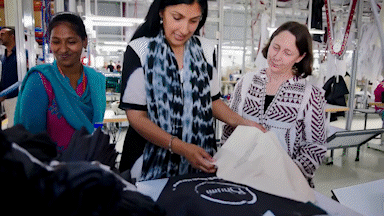
The final products are packaged in recycled cardboard boxes and shipped to customers across the world, using eco-friendly shipping and offsetting their carbon emissions by supporting relevant projects.
Now that we know the entire lifecycle of how cotton is made, it’s critical to be conscious of the type of cotton you buy — organic or conventional.
Organic cotton is grown without harmful chemicals, leaving the soil, air and water free from contaminants. Aside from that, organic cotton produces around 46% fewer CO2 emissions than conventional cotton.
It also requires far less water to grow since organic cotton growers typically use rain far more than irrigation. Organic cotton farmers follow crop rotation and other sustainable farming practices which enrich the soil quality and enhance local biodiversity.
On top of all that, organic cotton farmers use beneficial insects and natural pesticides like neem oil to control unwanted pests instead of relying on harmful chemicals that are dangerous to human health.
By choosing to buy organic cotton, you’re enhancing the health of humans, animals and natural resources around the world.
Supporting organic cotton agriculture is essential if we want to create a sustainable farming system and a sustainable textile industry.
Yes, currently, organic cotton products are still more expensive than conventional cotton ones.
And there’s a reason for that.
The slightly higher cost of certified organic cotton boils down to the increased cost of producing the fabric. According to Intracen, on average, GOTS-certified organic cotton products are 20-30% more expensive than conventional cotton.
However, if you prefer products that are not only safe but also help protect the environment and support ethical garment production, organic cotton is the right choice for you.
But the benefits of buying organic cotton fabrics extend beyond.
Studies show that organic cotton farming produces somewhat equal (and in some cases, exceeding) yields as conventional cotton. This means better livelihood and economic benefits to farmers in developing countries, resulting in higher incomes and more autonomy over their crops.
Organic cotton is one of the most sustainable and skin-friendly fabrics you can purchase.
At Bhumi, the certified organic cotton they use is both of a higher quality and cosy, comfortable and safer for your skin (they’re hypoallergenic).
And thanks to the softness and lack of chemicals used in manufacturing, Bhumi’s organic cotton products are one of the best options for kids and babies.
So if you have ever considered switching to organic cotton and feel the difference yourself, this is your sign! You’re not just investing in a piece of clothing — but in the health of your family, the farmers, the environment and the planet.

RELATED ARTICLES

